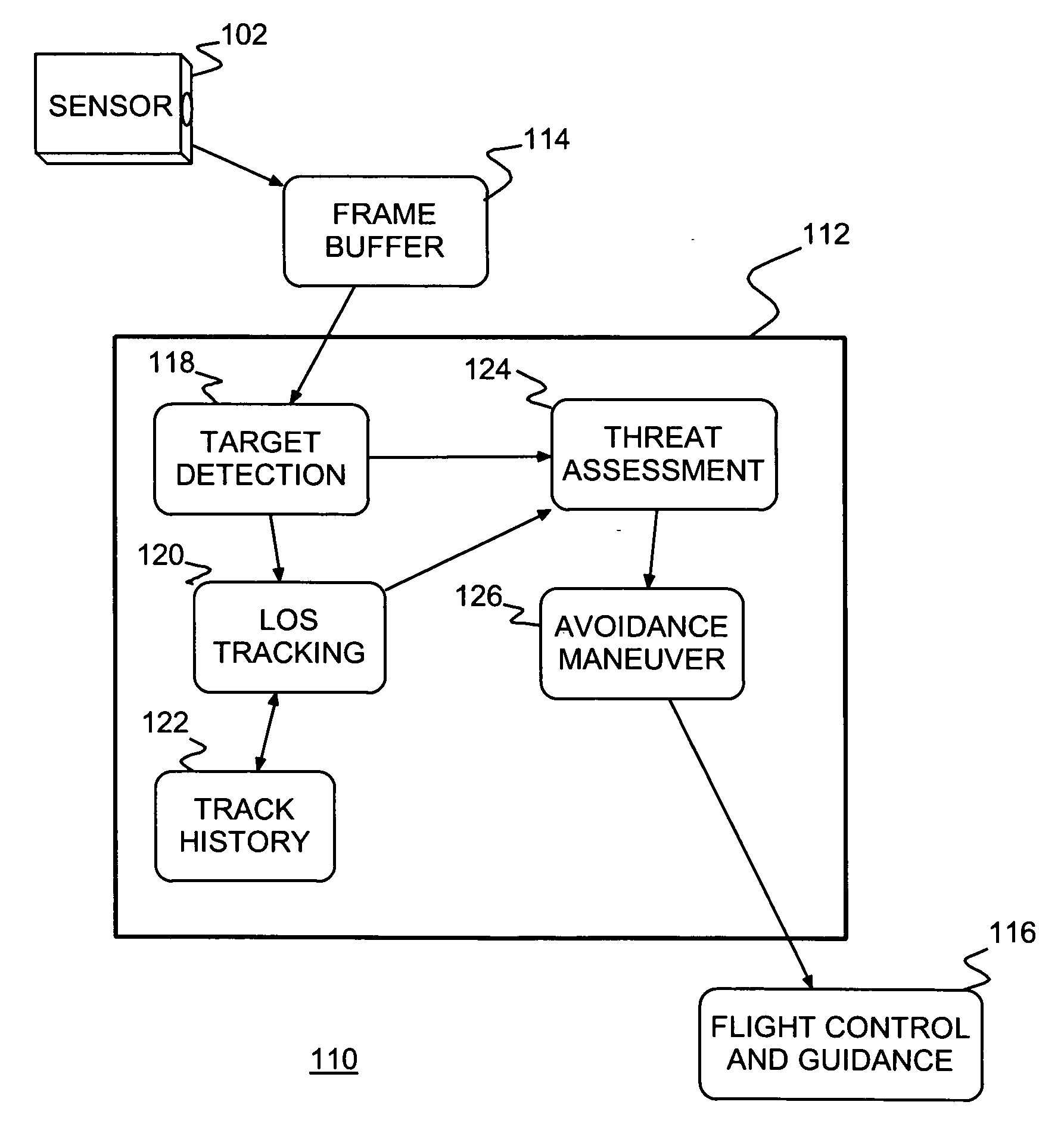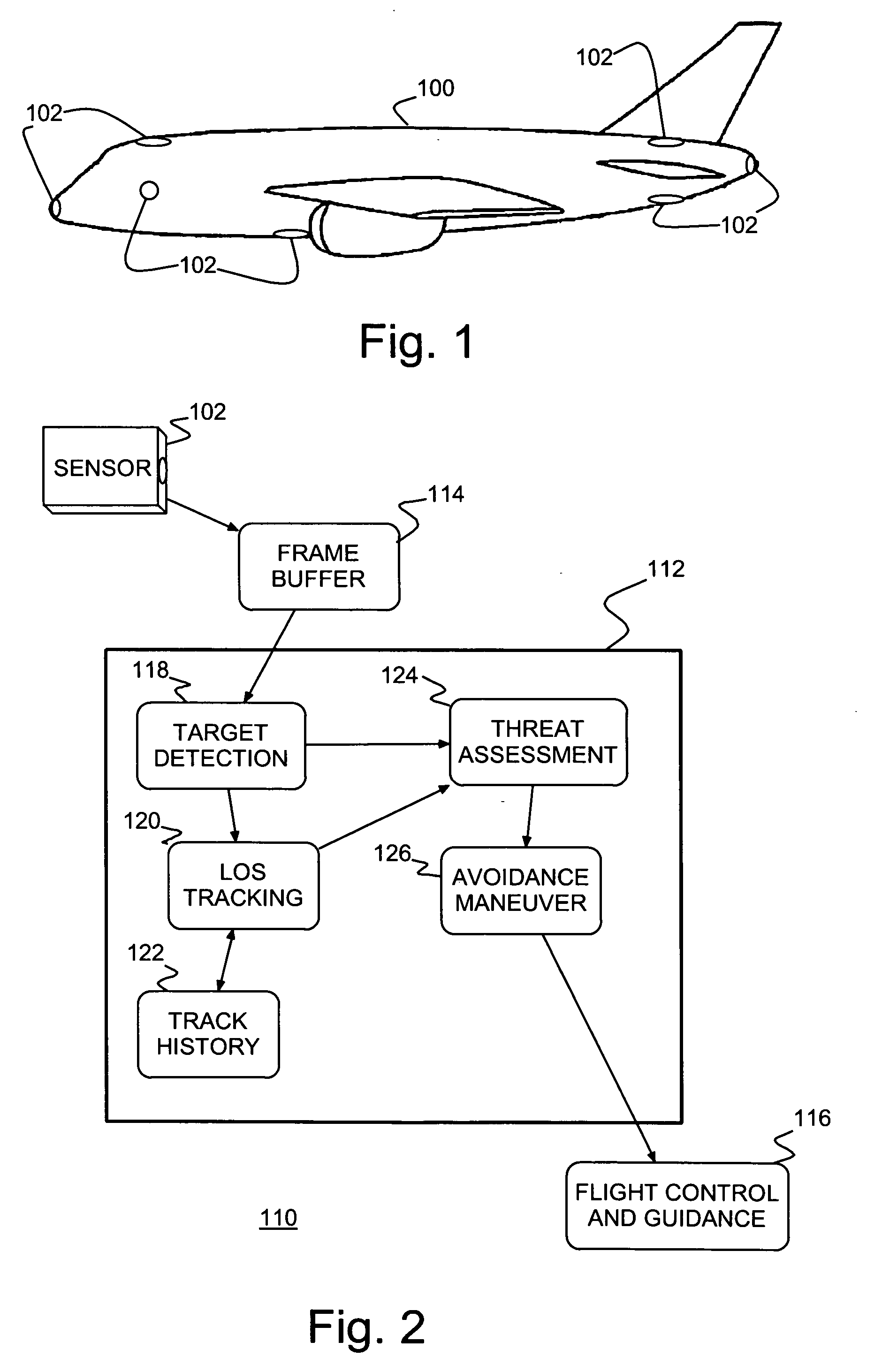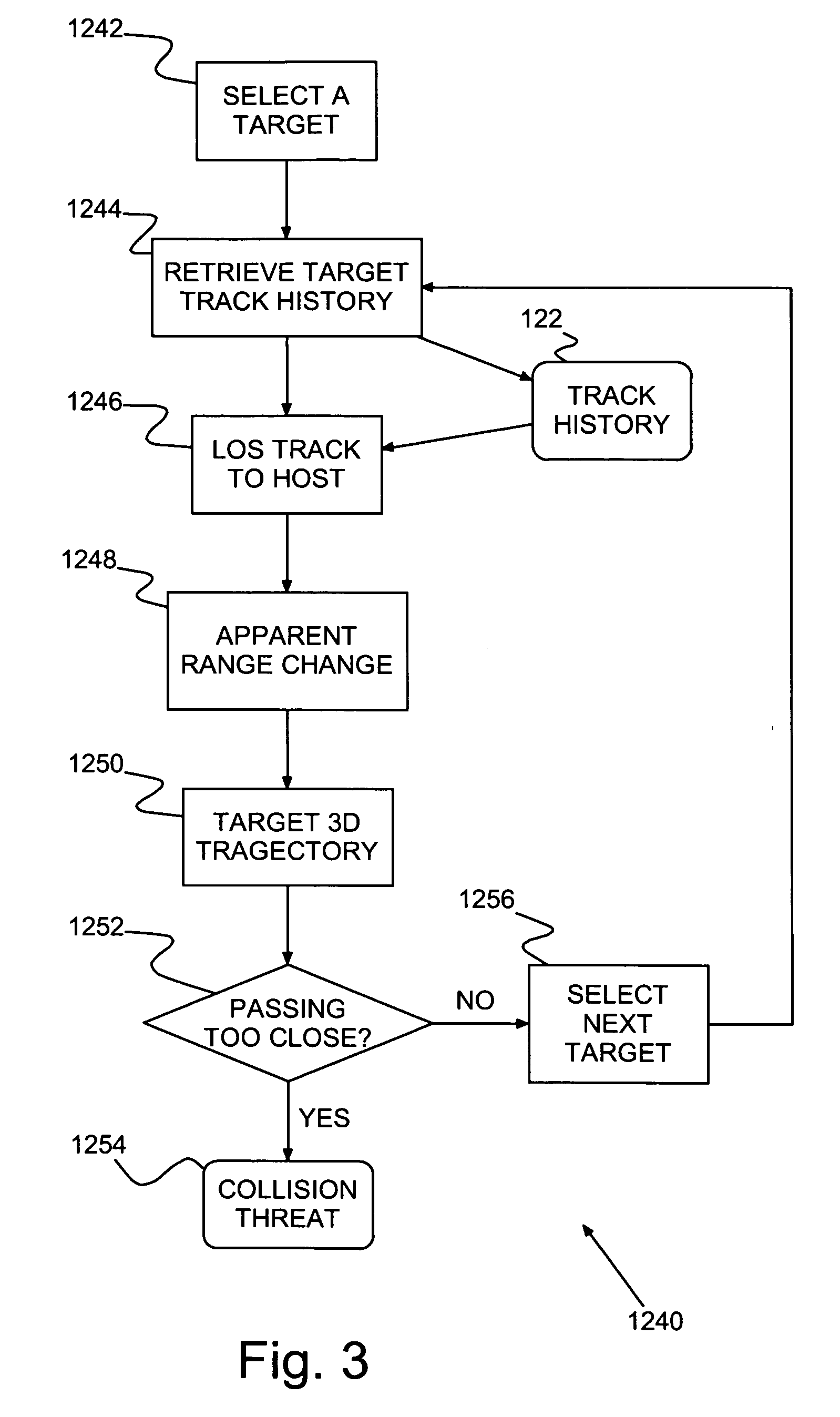Aircraft collision sense and avoidance system and method
a collision avoidance and air vehicle technology, applied in the direction of aircraft traffic control, instruments, measurement devices, etc., can solve the problems of air traffic control issuing contradictory commands, transponder may not be utilized in combat situations, labor-intensive and labor-intensive chaperoning such a vehicle, etc., to reduce size and weight
- Summary
- Abstract
- Description
- Claims
- Application Information
AI Technical Summary
Benefits of technology
Problems solved by technology
Method used
Image
Examples
Embodiment Construction
[0017] Turning now to the drawings, and more particularly, FIG. 1 shows an example of a preferred embodiment aircraft 100, e.g., an Unmanned Air Vehicle (UAV) or Remotely Piloted Vehicle (RPV), with a collision sense and avoidance system according to a preferred embodiment of the present invention. A suitable number of typical motion sensors 102 are disposed to detect moving objects in the vicinity of the host aircraft 100. The motion sensors 102 may be, for example, any suitable visible band sensors to mimic human vision, or infra-red (IR) sensors for detecting object motion in periods of poor or limited visibility, e.g., in fog or at night. The sensors 102 are connected to a preferred embodiment image interrogator in the host aircraft 100 that accepts real-time image data from the sensors 102 and processes the image data to detect airborne targets, e.g., other aircraft, even against cluttered backgrounds. The image interrogator builds time histories in Line Of Sight (LOS) space. T...
PUM
 Login to View More
Login to View More Abstract
Description
Claims
Application Information
 Login to View More
Login to View More - R&D
- Intellectual Property
- Life Sciences
- Materials
- Tech Scout
- Unparalleled Data Quality
- Higher Quality Content
- 60% Fewer Hallucinations
Browse by: Latest US Patents, China's latest patents, Technical Efficacy Thesaurus, Application Domain, Technology Topic, Popular Technical Reports.
© 2025 PatSnap. All rights reserved.Legal|Privacy policy|Modern Slavery Act Transparency Statement|Sitemap|About US| Contact US: help@patsnap.com



